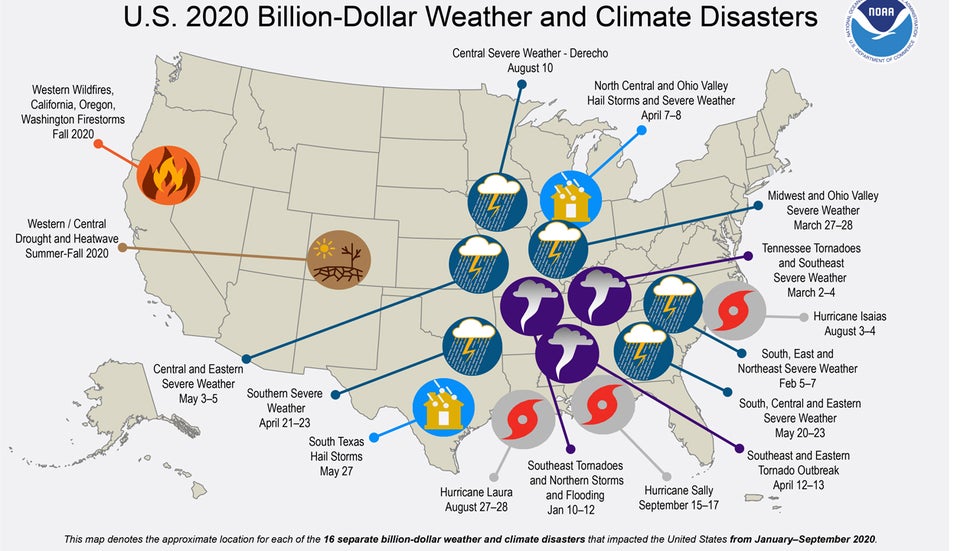Chris Dolce
A destructive thunderstorm complex called a derecho that raced hundreds of miles across the Midwest in August was the costliest to hit the United States in at least four decades, according to a report from NOAA.
The derecho tracked 770 miles from South Dakota to western Ohio and lower Michigan over a span of 14 hours on Aug. 10. Maximum wind gusts in the derecho were estimated to be near 140 mph in east-central Iowa near Cedar Rapids.
 Radar snapshots showing the timing and path of the derecho on Aug. 10, 2020.
Radar snapshots showing the timing and path of the derecho on Aug. 10, 2020.In addition to structural damage, downed trees and widespread power outages, the strong winds resulted in major agricultural losses for farmers. Millions of acres of corn and soybean crops were damaged in central Iowa, according to NOAA.
The agricultural losses vaulted the estimated damage cost from the derecho to $7.5 billion, NOAA said. That makes it the most expensive severe thunderstorm event for a single day in NOAA's database of billion-dollar weather disasters dating to 1980.
 Corn plants, blown over by an intense derecho, lay in a field on Monday, Aug. 10, 2020, near Polo, Illinois.
Corn plants, blown over by an intense derecho, lay in a field on Monday, Aug. 10, 2020, near Polo, Illinois.When factoring in multi-day severe thunderstorm outbreaks, there have been only three events in NOAA's database with a higher cost than the August derecho.
The U.S. has been hit by 16 billion-dollar weather disasters so far in 2020, tying 2011 and 2017 for the most such events in a year. Hurricane Laura is the most expensive weather disaster so far this year with an estimated cost of $14 billion.

From 1980 through September, 289 weather and climate disasters have tallied overall damage costs that reached or exceeded $1 billion, including adjustments for inflation. Nearly 44% of those disasters have been caused by severe thunderstorm events.
The Weather Company’s primary journalistic mission is to report on breaking weather news, the environment and the importance of science to our lives. This story does not necessarily represent the position of our parent company, IBM.
The Weather Company’s primary journalistic mission is to report on breaking weather news, the environment and the importance of science to our lives. This story does not necessarily represent the position of our parent company, IBM.

No comments:
Post a Comment